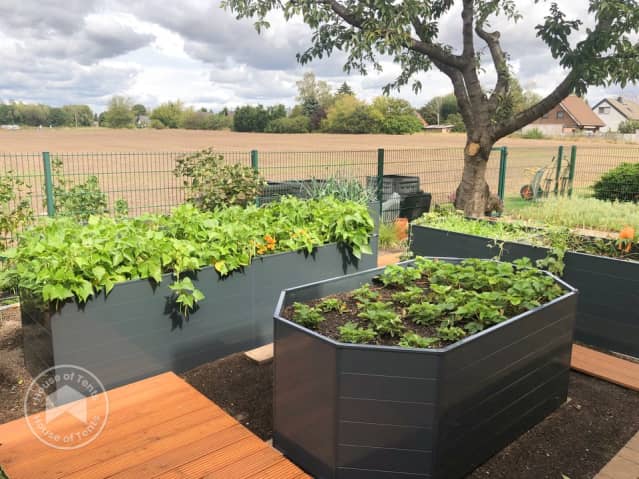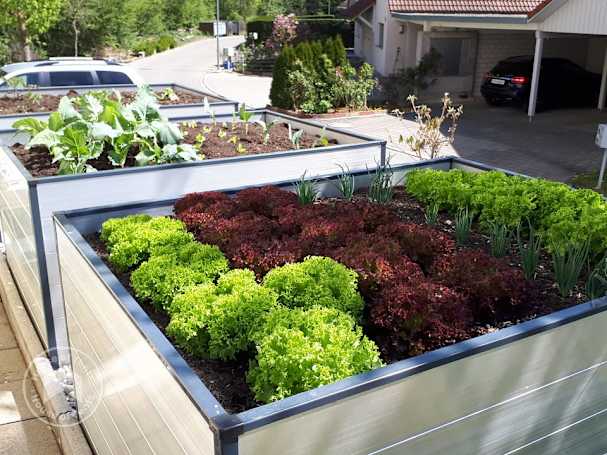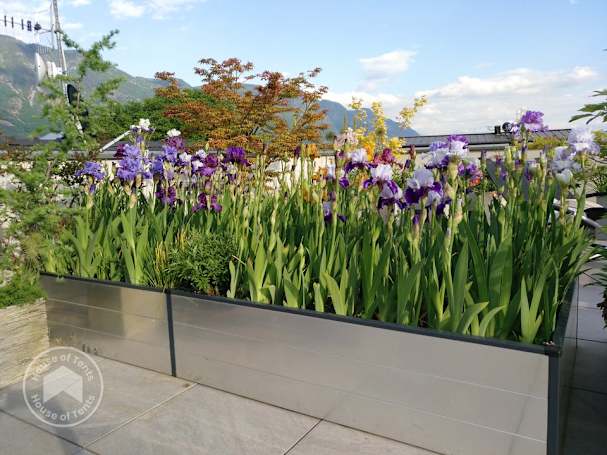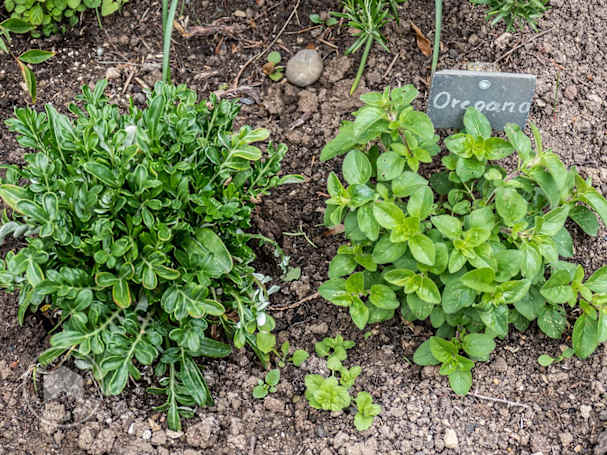
- Height 77 cm
- Rectangular
- Available in 4 widths
Now that your raised bed is ready and waiting, there's only one essential step left: planting it. But what should you consider planting in your raised bed? Look no further; this guide has the best vegetable and flower bed planting ideas. Discover inspiring ideas for filling your planter box with greenery and gain valuable insights on planting it the right way.

You can level up up your gardening game with some cool ideas for your raised beds. Picture this: a burst of vibrant flowers adding a pop of colour to your backyard, creating a scene straight out of a magazine. But it's not just about looks – imagine pairing veggies in a way that not only saves space but also makes your home-cooked meals way more exciting. Think tomatoes next to basil, or carrots cosying up with onions. These pairings not only look good together but also taste amazing when you toss them into your dinner pot. Not to mention the useful herbs – like rosemary and thyme – right at your fingertips, ready to bring a burst of flavour to your cooking whenever you want.
It's rewarding to dive into the world of raised bed gardening and explore the fantastic array of possibilities for planting vegetables and fruits. When it comes to choosing what to grow in your raised bed, the options are abundant and varied. Picture vibrant tomatoes, crisp cucumbers, fresh lettuce, flavourful potatoes & sweet carrots. Our plant more adventurous vegetables like zesty peppers, earthy beetroot, crunchy radishes, and nutrient-packed broccoli flourishing in your vegetable garden. For those who appreciate organic goodness, raised beds are a perfect fit, thanks to the natural fertilizers enriching the soil layers. Among the favorite fruits for British raised beds are strawberries. In fact, almost any plant that thrives in a greenhouse can find a happy home in your raised bed.

Now, here's a pro-tip: go for a mix of crops in your raised beds. This technique, known as mixed cultivation, involves densely planting different types of plants in a limited space. The goal? To make the most of your growing area. Consider a dynamic combination of fast-growers like spinach, towering varieties like certain tomatoes, and sprawling pumpkins that elegantly spill over the edges. Embrace vertical growth with vegetable plants that love climbing supports. Experiment with a harmonious mix of above-ground and below-ground root vegetables to create a thriving and visually appealing raised bed garden.
Did you know?
A north-south orientation of your raised bed favours good growth. That's because raised bed vegetables need plenty of light for a rich harvest. When planting vegetables, also pay attention to which varieties you plant close together. Good neighbours for strawberries are, for example, leeks, onions and spinach; for tomatoes, kohlrabi; for lettuce, radishes and for cucumbers, beans and peas.
Transform your raised bed into the vibrant focal point of your garden by adding a splash of colourful flowers! Whether you're looking to enhance your garden's aesthetic, create captivating floral displays, or if your garden soil isn't flower-friendly, a nutrient-rich flower bed is your perfect solution. The beauty of a raised flower bed lies in its versatility – it can host a diverse array of flowers, turning your garden into a bee-friendly and eye-catching display.
To make sure your flowers steal the show, pay attention to the size of each plant and their respective flowering times. Optimal results come from planting flowers that bloom simultaneously, creating a visual masterpiece. You can enhance the visual appeal of your raised flower bed by incorporating a variety of ornamental grasses such as Fountain Grass (Pennisetum setaceum), Japanese Forest Grass (Hakonechloa macra), and Feather Reed Grass (Calamagrostis x acutiflora). Plant these strategically along the edges or interspersed among flowering perennials to create dynamic texture and movement in your garden.

So, what flowers are best for your flower bed? Think in terms of strong, medium, and light feeders. Heavy feeders, like chrysanthemums and tulips, draw nutrients vigorously during their growth phase. For a balanced approach, consider medium feeders like dahlias and low feeders like primroses. Check out the handy table for a quick guide on nutrient needs.
| Heavy Feeders | Medium Feeders | Light Feeders |
|---|---|---|
| Chrysanthemums | Snapdragon | Azaleas |
| Sunflowers | Dahlias | Primroses |
| Geraniums | Pansies | |
| Tulips | Begonias |
Explore a diverse selection of herbs for your raised bed, ranging from local varieties to those with a Mediterranean flair. When choosing herbs, be mindful of their specific needs—some sunl-loving plants thrive in full sun, such as aniseed, basil, tarragon, oregano, thyme, and chamomile, while others, like parsley, chives, lemongrass, and wild garlic, prefer a semi-shady spot. Plan your herb garden arrangement thoughtfully, ensuring compatibility among neighboring plants. For instance, sage pairs well with savory, chives, lemon balm, and tarragon, while parsley complements dill and marjoram. Freeze your harvested herbs for convenient use whenever you need a burst of fresh flavour.

For a novice gardener ready to embark on the journey of planting a raised garden bed, consider these essential tips.
First and foremost, ensure that your raised bed has good drainage. Combining compost to the topsoil will not only enrich the soil but also promote healthy plant growth.
Opt for a diverse selection of different plants to create a vibrant and thriving garden.
Take into account the sunlight conditions in your garden—some plants, like shade-loving varieties, thrive in areas with less direct sunlight, so plan your layout accordingly.
Regularly inspect your vegetable garden and promptly remove any weeds by hand to prevent them from competing with your plants for nutrients and sunlight. Landscape fabric can be an effective way of stopping weeds from sprouting.
Adequate watering is crucial for plant health, so establish a consistent watering routine, keeping in mind that raised beds may require more frequent watering than traditional gardens.
Plant perennials. Perennials are plants that live for more than two years, often returning each growing season. Once established, they can provide beauty and structure to your garden for many years.
Following a yearly plan for planting your garden bed increases the success of your gardening efforts. Check out our annual plan, presented in an easy-to-follow table, for a clear guide on what to plant and when. Whether you're a seasoned gardener or just starting, our plan⁹⁵ is a valuable resource, offering inspiration for your garden design and assisting you in detailed cultivation planning. Let it be your go-to tool for a thriving and well-timed garden.
| February | March - April | May - June | July - August | September - October | ||
|---|---|---|---|---|---|---|
|
|
|
|
|
| |
| Flowers |
|
|
|
|
| |
| Herbs |
|
|
|
|
|
Especially if you're just starting out with gardening using a raised flower bed or vegetable bed, you can benefit from our expert advice. Test out your garden bed ideas for our bed kits with our advisors. Whether its questions about drainage, gardening with compost, or building your high-quality garden bed on a hard surface, our customer service team are happy to help out.
Expert advice
